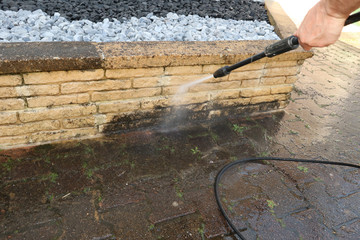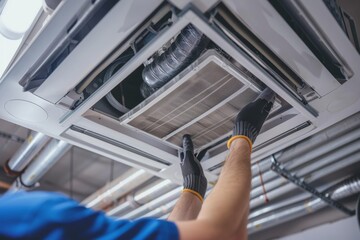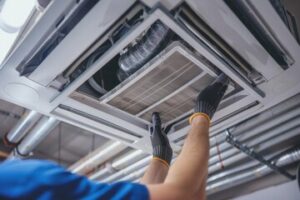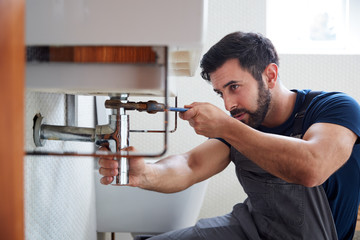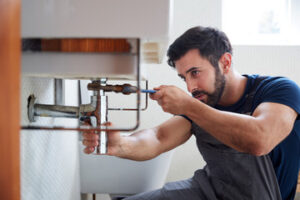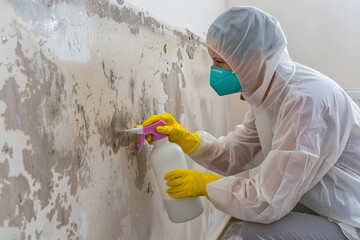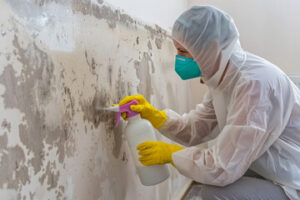A pressure washer can clean all types of surfaces and can help to revive a paint job. It can also remove moss and mildew from decks, brick, concrete and house siding.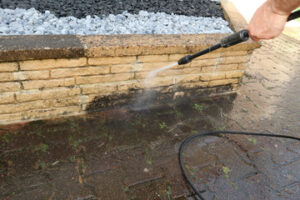
When using a pressure washer, proper technique is required to avoid damage to the surface being cleaned. The correct nozzle must be selected and the pressure must be adjusted for different cleaning situations. Visit https://wwoftx.com/ to learn more.
Mold, mildew, dirt and other debris accumulate on exterior surfaces over time. They are unsightly, create a breeding ground for insects and other unwanted organisms, and can damage and deteriorate the material that they are clinging to. Pressure washing eliminates these substances, restoring surfaces to their original appearance and extending the life of the surface materials.
In addition to being an effective cleaning method, pressure washing is environmentally friendly when done correctly. Choosing the proper psi, water rotation and cleaning solution is key to creating an environmentally responsible and safe process. The use of biodegradable cleansers enhances the cleaning power and improves the overall results.
A power washer produces a forceful stream of water that can be adjusted for different types of surfaces and stains. The kinetic energy of the pressurized water breaks the bonds between the surface and the unwanted substances, allowing them to be easily removed. The use of detergents and other cleaning solutions further improves the removal of stubborn stains and prevents them from reoccurring.
When used appropriately, power washing can also be a great tool for eliminating and preventing insect infestations. Pests like ants, spiders and termites thrive in damp environments where they can eat away at the structural integrity of your home or business. Pressure washing eliminates these pests and their food sources, reducing the amount of organic matter that they consume and thereby limiting the damage they cause.
Mildew, mold and other fungi grow best on shaded, damp areas and can degrade building materials over time. They are not only an eyesore but can cause respiratory problems for those who are sensitive to their spores.
In order to prevent the growth of these fungi, it is important to regularly clean the surfaces of your home or business. Pressure washing provides a quick and effective way to remove these undesirable intruders, and when done by trained professionals like the team at Squeegee Squad, it is not only effective but can also be environmentally responsible. It is critical to choose the correct pressure settings and nozzles to avoid damaging delicate materials, such as paint or siding.
Improves Curb Appeal
Professional pressure washing removes dirt, grime, mildew, and other unwanted substances from exterior surfaces that impact the look of your home or business. It also revitalizes faded surfaces, restoring their original color and appearance. As a result, curb appeal is dramatically improved. This first impression of your property is critical in the real estate market, where buyers are often willing to pay a premium for homes and businesses that appear well-maintained and clean.
The best time to pressure wash is in early spring and fall when the sun helps dry the surfaces quickly. However, choosing the right day depends on the type of surface and weather conditions in your area. For example, concrete and brick can be cleaned during the afternoon, when the sun is warming them up.
It’s essential to cover any fragile areas or electrical fixtures before cleaning them with high-pressure water. It’s also helpful to inspect the surfaces you plan on cleaning for any pre-existing damage that could be worsened by the water. Finally, it’s a good idea to protect plants and pets from the cleaning process by covering or relocating them.
Whether you’re selling your home or simply want to impress neighbors and guests, curb appeal is key. Pressure washing is an inexpensive way to make your property stand out in a crowd, enhancing its overall beauty and value.
Curb appeal is important because it reflects your pride of ownership and signals to others that you care for your property. If you have a neglected looking property, it can send the message that you don’t care about your home or business. Keeping your property clean and attractive with regular power washing and other maintenance activities is one of the easiest ways to increase your curb appeal.
In an increasingly eco-conscious world, it’s important to choose a professional pressure washing company that uses environmentally friendly methods. These techniques, combined with a focus on transparency and accountability, are critical to protecting your home or business investment while minimizing the impact of environmental waste. Additionally, using green cleaning solutions ensures that your property is treated with the highest level of care and respect.
Prevents Water Damage
Pressure washing is a safe, effective cleaning method for many types of materials and surfaces. It can be used on a variety of exterior areas including driveways, sidewalks, patios, roofs, brick and masonry walls, fences, and outdoor furniture. It’s especially effective for materials that are vulnerable to damage, such as wood or shingles. The forceful water stream can reach difficult-to-reach crevices and loosen accumulated dirt and debris. Pressure washing can also remove stubborn stains without damaging the surface beneath.
Pressure washers typically have adjustable nozzles that offer various spray settings. A low-pressure setting can be used on delicate surfaces such as vinyl siding and windows, while a higher-pressure setting is better for cleaning tough stains from concrete or other hardscapes. Some pressure washers even have specialized nozzles that target specific types of stains, such as oil and grease.
Because the water is so forceful, it’s important to choose a professional who knows how to use the equipment safely. If the wrong settings are used, the high-pressure water can strip paint or gouge soft stones. It’s also important to choose the right nozzle for each job. If you’re planning to rent a pressure washer for the job, make sure it’s equipped with a selection of nozzles and is labeled for proper use.
Water intrusion during a pressure washing service is rare, but it can happen. It’s important to assess the damage and determine if any repairs are needed. Water entry into the home can be prevented by making sure the washing nozzle is at least four feet away from the house, and by using a lower-pressure setting for delicate surfaces.
It’s also important to take steps to protect any vulnerable items in the immediate area of the cleaning area, such as plants, patio furniture, and other exterior features. It’s a good idea to cover them with plastic sheeting or tarps before pressure washing, and to shut off any electricity to outlets on or near the surfaces being cleaned. Additionally, a professional can help you identify any areas where water might enter the house (like laundry vents or soffit vents) and take the necessary precautions to prevent this from happening.
Saves Money
Pressure washing removes harmful contaminants from surfaces that might otherwise require expensive repairs or replacements. Mold, mildew, and algae can eat away at materials like wood, concrete, and vinyl, requiring costly maintenance and repair services. By regularly cleaning these substances away with the powerful force of water jets, you can protect your investments and keep your property looking great.
Dirty, grimy surfaces are also a magnet for pests such as bugs, spiders, and rodents, which can cause significant damage to your home or property. Regularly pressure washing your home and outdoor spaces can help deter these unwanted visitors, saving you money on costly pest control services.
Keeping your home clean with pressure washing also saves you time. Instead of spending hours scrubbing and scraping, you can simply point and shoot at stubborn stains and dirt deposits with the power of water jets. This means more time for spending with family and friends, binge-watching your favorite shows, or doing any other activities you enjoy.
Additionally, a professional clean of your roof, gutters, patio, or deck can reveal potential problems with your property that might go unnoticed. For example, a sudden leak from your roof or a section of rotting wood in your deck might go unnoticed by an inexperienced homeowner, but it will be readily apparent to a professional who uses a calibrated pressure washer with the right settings.
Finally, a pressure wash can improve energy efficiency in your home by eliminating the layers of dirt and debris that might be obstructing sunlight from entering living spaces. In fact, a recent study found that homeowners who perform regular, professional soft roof washing and house washing see an increase in energy costs savings as a result of the removal of these contaminants from exterior surfaces.
